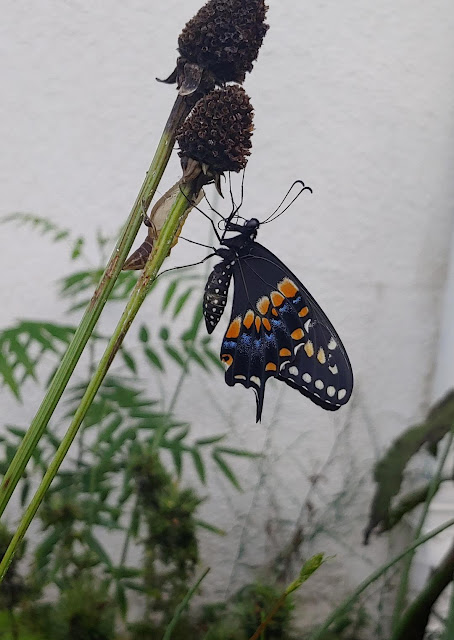Natives vs Nonnatives - Eastern Black Swallowtails

Newly emerged eastern black swallowtail A couple of days ago, the last of my newest set of eastern black swallowtails emerged from their chrysalises in my landscape. This time of year, their mother laid her eggs on my native water dropwort ( Tiedemannia filiformis ) that had recently begun blooming. Each fall, the butterflies find this plant as the blooms begin to develop and the caterpillars eat them to the nub. It's a ritual I anticipate and it's one that rarely leaves me with seed to propagate for my nursery, Hawthorn Hill. I have to collect seed in other areas where there are so many plants that at least some of them escape the herbivory. In my experience, water dropwort is the best native plant to feed eastern black swallowtails with and it is one I consider indispensable in every landscape I've planted since moving to Florida. The rub is that they only lay eggs on it in the late summer when it begins to bloom. Until that time, the plant is ignored. Th...

